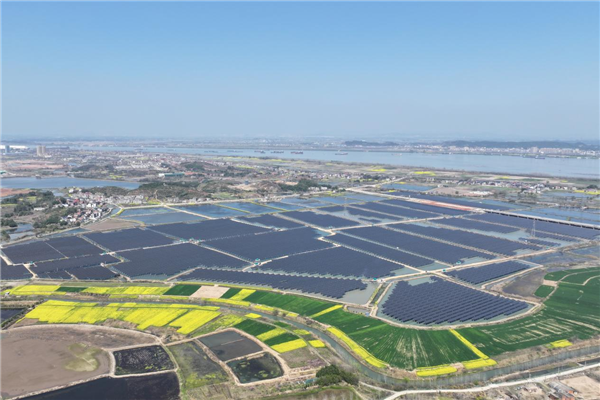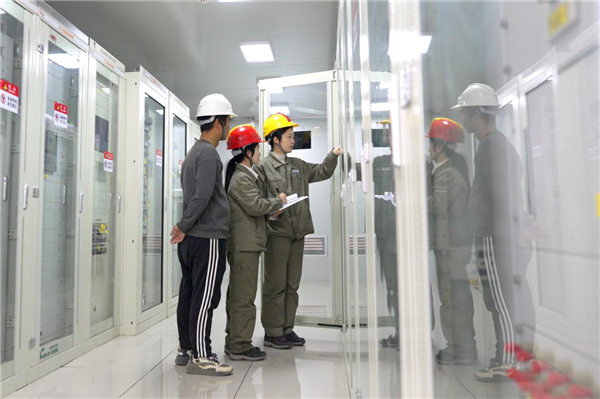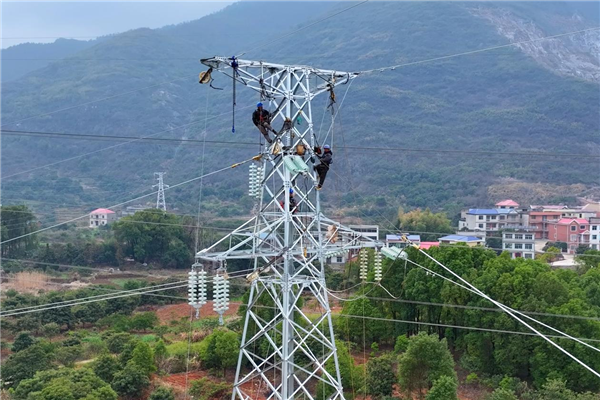Recently, at the photovoltaic power substation in Huangsangkou Town, Yangxin County, Huangshi City, Hubei Province, power workers successfully closed the connection switch between the substation and the transmission line after conducting equipment inspections. This marks the large photovoltaic power plant’s successful connection to the grid.

Aerial view of the solar power plant. Photo by Cao Xiangkui
The Fishery and Agriculture Solar Complementary Project, invested in and constructed by China Resources New Energy (Yangxin) Co., Ltd. in the area, covers over 1,500 mu (about 100 hectares). It comprises 153,000 photovoltaic panels, with a total installed capacity of 70 megawatts (MW), and is expected to generate 96 million kilowatt-hours (kWh) of electricity annually.

On-Site Inspection of Grid-Connected Operating Equipment. Photo by Cao Xiangkui
"Based on an average household load of 3.5 kilowatts (kW), this solar power plant's installed capacity can meet the electricity demand of 20,000 households," explained Wang Yizhou, the project manager. He added that after grid connection and operation, it will reduce annual carbon dioxide emissions by nearly 60,000 tons.

Construction Site for the Solar Power Plant's Supporting Power Lines. Photo by Cao Xiangkui
According to the connection plan, transmitting the "green electricity" from the solar power plant to the grid requires a 110-kilovolt (kV) power line to link the plant with the 220-kV Songjiashan Substation in Yangxin. The construction task includes erecting 103 new towers and installing 29.02 kilometers (km) of transmission lines.
To achieve efficient resource utilization, the project will implement aquatic and agricultural initiatives in light of actual conditions. This aims to create a coordinated development pattern of "generating solar power above water, while harvesting bountifully from farming and fishing below," ensuring a win-win of economic and ecological benefits.
Copyright ©1997- by CRI Online All rights reserved